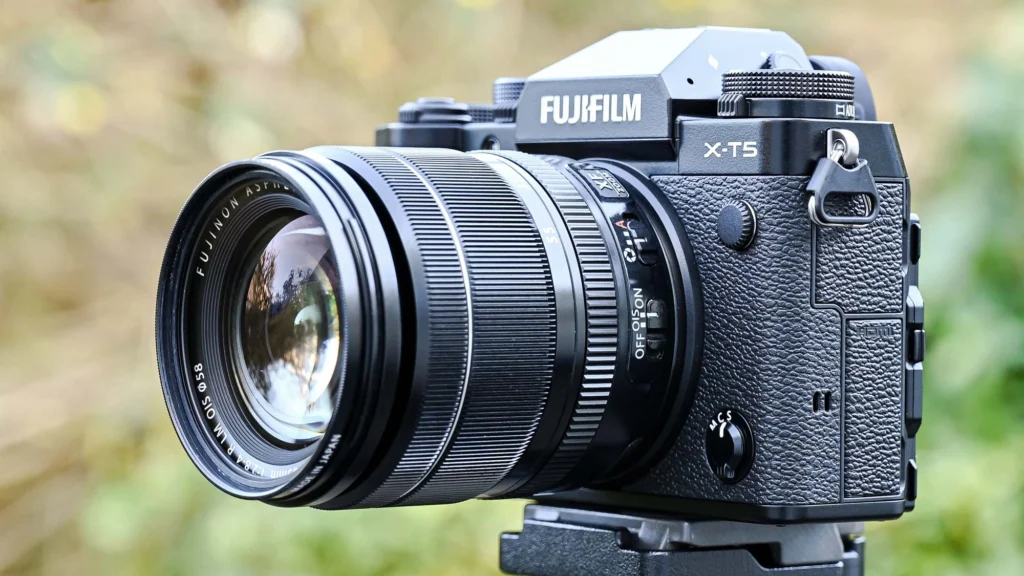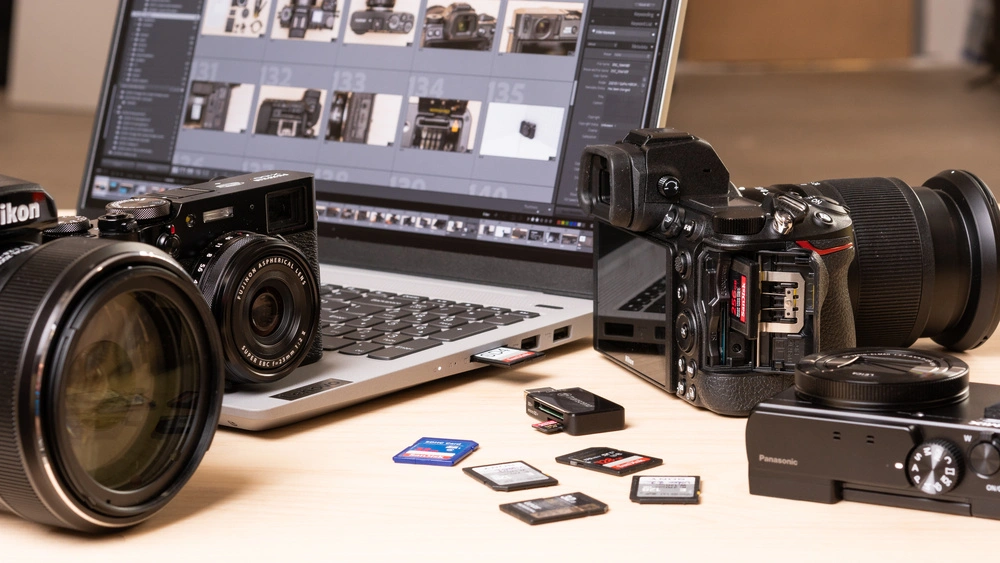In today’s fast-paced world, where every moment seems to flash by in the blink of an eye, a device that captures those moments is nothing short of magical. Enter the digital camera, a technological marvel that has revolutionized the way we capture memories, express our creativity, and share our experiences. In this article, we’ll dive into the world of digital cameras, exploring their history, evolution, and how they have become an integral part of our lives.
A Glimpse Into the Past
To truly appreciate the wonders of digital cameras, we must first take a step back in time. In the early days of photography, cameras were bulky and relied on film rolls to capture images. Developing these films was a tedious process, often taking days before you could lay eyes on your precious photographs. It was a world of patience and anticipation, quite the opposite of our instant-gratification era.
Enter the Digital Revolution
The turning point came with the advent of digital technology. Digital cameras made their debut, and they were nothing short of a game-changer. These cameras captured images as digital files, eliminating the need for film rolls and darkrooms. Suddenly, you could review your photos instantly on an LCD screen and decide if they were keepers or destined for the virtual trash bin.
But what exactly is a digital camera? Simply put, it’s a device that captures photographs and videos in digital format, allowing for easy storage, sharing, and manipulation of the media. No more waiting for film development; your memories were now available at the press of a button.
The Anatomy of a Digital Camera
Now that we have a basic understanding of what a digital camera is, let’s take a closer look at its components. Think of a digital camera as a symphony orchestra, each part playing a crucial role in producing the harmonious melody of your photographs.
- Lens: The lens is like the conductor of the orchestra, directing light onto the sensor. It determines how much light enters the camera and the composition of the image. Different lenses offer various creative possibilities, from wide-angle to telephoto.
- Sensor: The sensor is the heart of the camera, where the magic happens. It converts light into digital information, creating the image you see on the LCD screen or through the viewfinder. Sensor size and quality greatly impact image clarity and low-light performance.
- Processor: The processor can be compared to the musicians in the orchestra, interpreting the data from the sensor and turning it into a digital image. A powerful processor allows for faster image processing and better performance in challenging conditions.
- LCD Screen: This is your window into the world of photography. The LCD screen displays the scene you’re about to capture, making it essential for composing your shot. Some cameras even feature touchscreen functionality for intuitive controls.
- Viewfinder: Like a well-tuned instrument, the viewfinder helps you frame your shot with precision. Optical viewfinders provide a direct view of the scene, while electronic viewfinders (EVFs) offer additional information overlays.
Evolution of Digital Cameras
The digital camera industry has seen remarkable evolution over the years, akin to the progression of a symphony from its classical roots to modern compositions. Here are some key milestones:
1. Megapixels Race: In the early days, manufacturers competed in a megapixels race, with cameras boasting higher and higher resolution. While megapixels are essential for detail, other factors like sensor size and lens quality also play a significant role in image quality.
2. Compact vs. DSLR: The debate between compact and DSLR (Digital Single-Lens Reflex) cameras is reminiscent of choosing between a chamber orchestra and a full symphony. Compacts are portable and easy to use, while DSLRs offer advanced controls and interchangeable lenses for professionals and enthusiasts.
3. Mirrorless Cameras: The rise of mirrorless cameras disrupted the orchestra, introducing a new player in the form of compact system cameras (CSCs). These cameras combine the best of compacts and DSLRs, offering interchangeable lenses without the bulk of traditional DSLRs.
The Digital Camera in Everyday Life
Now that we’ve explored the inner workings and evolution of digital cameras, let’s shift our focus to how these devices have become an integral part of our daily routines. It’s like adding a melodious tune to the soundtrack of our lives.
Capturing Precious Moments
Remember the days of waiting for film development? With digital cameras, that’s a thing of the past. You can now capture birthdays, vacations, and spontaneous moments with ease. It’s like having your personal conductor, ready to create a symphony of memories at a moment’s notice.
Social Sharing
Digital cameras have harmoniously blended with the rise of social media. With the ability to instantly share photos and videos, we’ve become our curators, sharing our stories through images. It’s as if we’re conducting a virtual orchestra, with every post, comment, and like adding to the melody of our online presence.
Creative Expression
Photography has become a form of artistic expression accessible to everyone. With features like manual controls, filters, and various shooting modes, digital cameras empower us to explore our creativity. It’s like composing a unique musical piece with each click of the shutter.
The Future of Digital Cameras
As we look to the future, the symphony of digital cameras is far from over. Advancements in technology continue to shape the industry, promising exciting developments. It’s like a musical composition with unexpected twists and turns, keeping us eager for the next movement.
The Digital Camera: Capturing Moments in Pixels
Embracing the Digital Camera Symphony
As we delve deeper into the realm of digital cameras, it’s essential to embrace the various facets of this symphony. Like a skilled conductor, understanding how to make the most of your digital camera can elevate your photography to new heights.
Digital Camera Idioms: Navigating the Melody
- “A Picture is Worth a Thousand Words”: This age-old saying takes on a new dimension in the digital era. A well-composed photograph can convey emotions, tell stories, and capture the essence of a moment more effectively than any written word.
- “Capture the Moment”: Digital cameras excel at seizing fleeting moments. Whether it’s a child’s first steps or a stunning sunset, having your camera ready means you won’t miss the chance to create lasting memories.
- “The Devil is in the Details”: With the ability to zoom in and capture fine details, digital cameras allow you to explore the intricacies of the world around you. It’s like discovering hidden harmonies within a musical score.
Contradictions in Photography
Photography, like music, often thrives on contradictions. These paradoxes add depth to your photographic journey.
- Capturing Stillness in Motion: Digital cameras excel at freezing fast-moving subjects, yet they can also capture the beauty of motion through techniques like long exposure photography, where flowing water appears as a silky cascade.
- Light and Shadow: The interplay of light and shadow is essential in photography. Digital cameras let you explore the stark contrast between bright highlights and deep shadows, creating dramatic compositions.
- Macro vs. Wide-Angle: Choosing between macro and wide-angle lenses can be like deciding between a solo performance and a grand symphony. Macro lenses reveal intricate details, while wide-angle lenses capture sweeping vistas.
Translating Your Vision
Much like composing a piece of music, translating your creative vision into a photograph requires skill and practice. Here are some tips to help you conduct your digital camera effectively:
- Mastering Composition: Understand the rule of thirds, leading lines, and framing to compose visually pleasing shots. It’s like arranging notes in a symphony to create a harmonious melody.
- Understanding Exposure: Learn to balance aperture, shutter speed, and ISO to achieve the desired exposure. It’s akin to adjusting the volume and tempo of instruments in an orchestra.
- Experimentation: Don’t be afraid to experiment with different settings and techniques. Photography is about exploration and finding your unique style, just like composing a musical masterpiece.
Digital Cameras and the Business Symphony
While digital cameras are often associated with personal photography, they also play a vital role in the world of business. In a way, they become part of a different kind of symphony – the business symphony.
Consider the use of digital cameras in various business scenarios:
Marketing and Promotion
Businesses rely on high-quality images and videos to promote their products and services. A well-captured photograph can be the difference between a customer choosing one product over another. It’s like hitting the right note in a marketing campaign.
Conference Calls and Communication
The links provided at the beginning of this article highlight the importance of conference calls in the business world. Digital cameras are integral to this communication, allowing for clear video conferencing and collaboration across distances. It’s like ensuring all instruments in the orchestra are in tune for a flawless performance.
Documentation and Record-Keeping
In industries such as healthcare, law enforcement, and construction, digital cameras are used for documentation and record-keeping. They serve as a visual record of important events, procedures, and evidence, much like musical notation in a score.
The Harmonious Blend of Digital Cameras
In the grand symphony of life, digital cameras have found their place as instruments of creativity, documentation, and communication. They have brought photography to the masses, enabling us to capture and share moments with ease.
So, as you embark on your own photographic journey or utilize digital cameras in your business endeavors, remember that these devices are more than just gadgets. They are conduits for self-expression, tools for communication, and witnesses to the symphony of your life. Embrace their capabilities, explore their contradictions, and let your creativity flow as you compose your own visual masterpiece.
The Harmonious Blend of Digital Cameras
Innovations on the Horizon
The world of digital cameras is far from stagnant. Just as music constantly evolves, so too does camera technology. Here are some exciting innovations on the horizon:
Computational Photography
Think of this as the digital camera’s improvisational jazz solo. Computational photography harnesses the power of artificial intelligence (AI) to enhance images in real-time. Features like night mode, portrait mode, and automated scene recognition are all made possible by AI, elevating the quality of your shots.

8K Video
In the video realm, digital cameras are gearing up for a shift to 8K resolution. This leap in quality is akin to transitioning from standard-definition to high-definition, offering incredibly detailed videos. It’s like watching a movie on the big screen, right in the palm of your hand.
Augmented Reality (AR)
Imagine being able to overlay information, animations, or filters onto your photos and videos in real-time. Augmented reality is poised to revolutionize the way we interact with the world through our cameras, adding a new layer of creativity to our visual compositions.
The Harmonious Connection: Digital Cameras and Creativity
Digital cameras, with their ability to capture and manipulate images, are more than just tools. They are conduits for human creativity, enabling us to tell stories, evoke emotions, and explore the world in ways we never thought possible. It’s like a never-ending symphony of possibilities.
The Symphony of Stories
Every photograph tells a story, a narrative frozen in time. Whether it’s a candid shot of a child’s laughter or a breathtaking landscape, each image has its own unique tale to share. With digital cameras, we become storytellers, weaving narratives through pixels and light.
The Language of Emotion
Photography is a universal language that transcends words. A portrait can convey joy, sadness, love, or nostalgia with a single glance. It’s like composing a piece of music that stirs the soul, creating an emotional connection with the viewer.
Exploring the World
Digital cameras are our passports to the world. They allow us to explore far-off places, document different cultures, and capture the beauty of our planet. It’s like embarking on a world tour with a camera as your trusty companion, ready to capture every moment.
The Final Curtain Call
In the grand performance of life, digital cameras have earned their standing ovation. They’ve seamlessly integrated into our daily routines, offering a harmonious blend of technology and creativity. Whether you’re a budding photographer, a seasoned pro, or a business professional, digital cameras have become indispensable instruments in your orchestra of experiences.
So, as you embark on your photographic journey, remember that your digital camera is not just a device; it’s a storyteller, an emotional conductor, and a window to the world. Capture moments, share stories, and compose your own symphony of memories with the magic of digital photography.
As the digital camera symphony continues to play, we eagerly anticipate the new movements, innovations, and surprises that the future holds. Just like a symphony with its crescendos and decrescendos, the world of digital cameras promises to keep us enthralled with its ever-evolving melody of pixels and possibilities.
Now, go out there and capture the world, one pixel at a time, and let your unique voice be heard in the ever-expanding symphony of digital photography.

